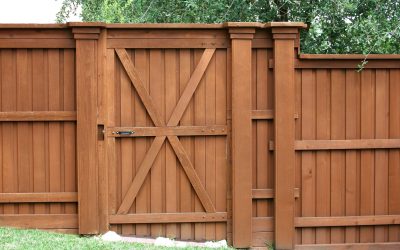Vinyl siding first appeared in the 1950s, providing an affordable way to clad buildings. Many people weren’t satisfied with the appearance or quality of the early materials, so manufacturers worked hard to develop improvements over the next two decades. By the 1980s, vinyl siding was considered a high-quality material suitable for even the most discerning homeowners. Vinyl Fencing, railing, windows and decks also became prevalent in this time frame and continue to be popular today.
These structures are useful for privacy and for deterring people from crossing a property, as well as for decorative functions. The fences can be constructed by an installation company such as Jenks Fence so they are very sturdy. They can be built to as tall a height as zoning allows, although reinforced posts are advisable if the fence is taller than 6 ft. In municipalities, fences this tall are usually only allowed at the back and sides of residences, while the front of the house must only have shorter fencing. Fences usually are not allowed at this height if the structure would block drivers’ views of traffic.
People who want low-maintenance siding generally choose between aluminum and vinyl. Aluminum fences are available, but they are generally intended as a low-maintenance alternative to wrought iron. Vinyl Fencing has the advantage of being able to look nearly exactly like wood. Unlike wood, it doesn’t require routine staining or painting, and it’s resistant to weather elements. Painting can be done, however, if the property owner eventually decides a different color would provide a nice change of pace. Insects, chipmunks, and squirrels won’t gnaw on a vinyl fence. In addition, when vinyl posts are held in the ground by concrete, they do not deteriorate the way that wood posts often do.
Vinyl doesn’t stain like wood does. If algae or mildew growth appears, property owners can easily hose it off or wipe it away with a wet rag. The vinyl production also doesn’t require the logging of wood from forests. More stubborn stains can be removed with a soft brush and some mild detergent or a paste made from baking soda and water. You can also follow them on Twitter.

